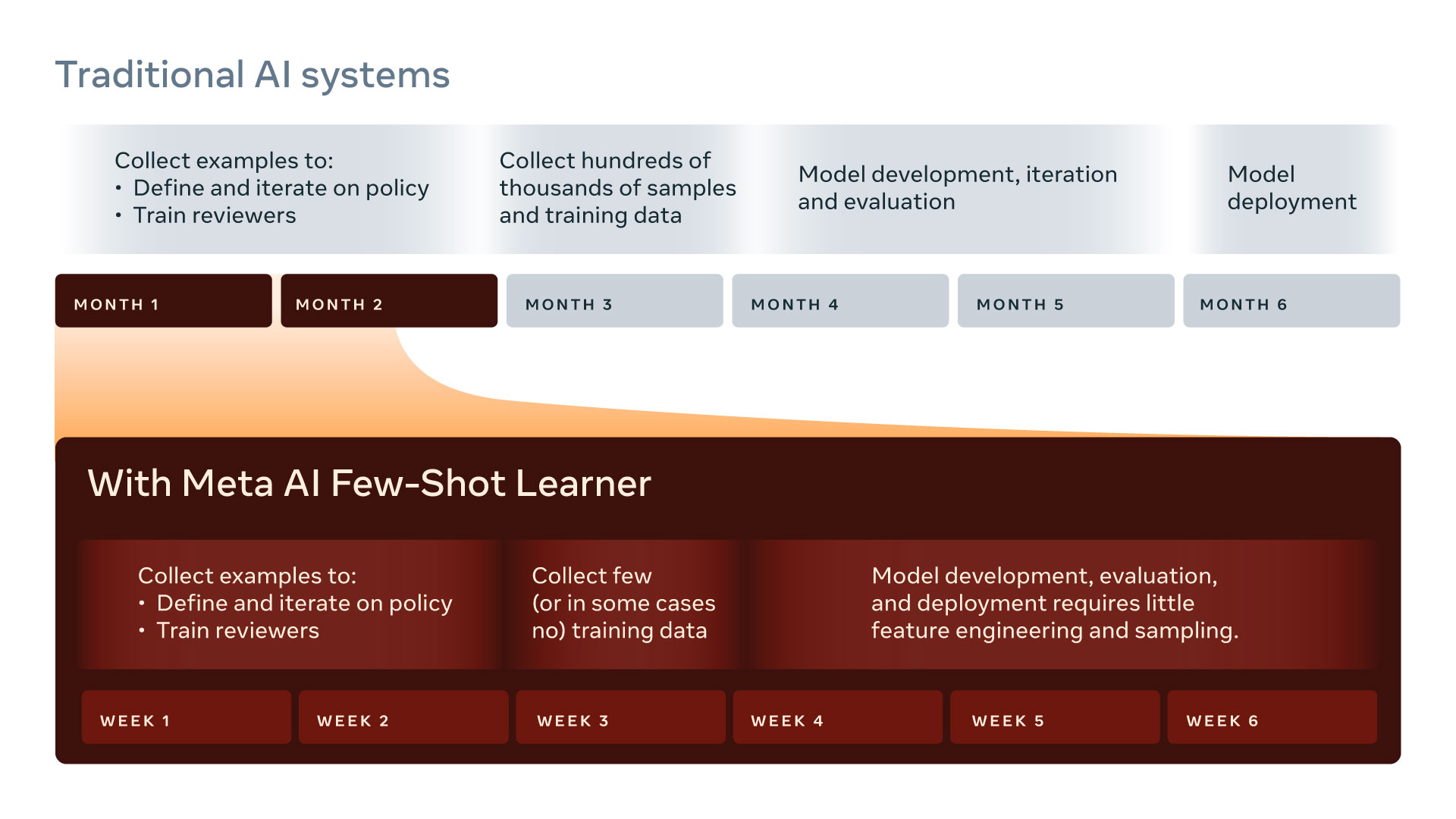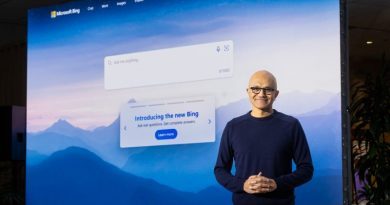What can a Few-shot Learner do?
As mentioned in the previous article, Meta has created an AI technology to tackle Hate Speech and Harmful Content on Social Media. Now, we will share about Meta’s AI Technology, Few-Shot Learner (FSL).
FSL AI Technology will be able to study data to take action on new or evolving types of harmful content within weeks instead of months that Traditional AI System does. It not only works in more than 100 languages, but it also learns from different kinds of data, such as images and text, and detects other types of harmful content.

Photo Source ai.facebook.com
Traditional AI systems collect examples to define and iterate on policy during the first and second months, collect hundreds of thousands of samples during the third month, make model development, iteration and evaluation during the fourth and fifth months and use its model deployment in the last month. However, Meta’s Few-shot Learner can collect examples to define and iterate on policy with first and second weeks, collect a few or some cases during the third week, and make Model Development, evaluation, and deployment during the fourth, fifth and sixth weeks. In case, this new AI System can use a different method, a few-shot learning method to analyst different topics in a short period of time.
Few-Shot Learner is a large-scale, multimodal, multilingual, zero or few-shot model that enables joint policy and content understanding, generalizes across integrity problems, and doesn’t require model fine-tuning. FSL system works across three different scenarios:
- Zero-shot: Policy descriptions with no examples.
- Few-shot with a demonstration: Policy descriptions with a small set of examples (less than 50).
- Low-shot with fine-tuning: ML developers can fine-tune the FSL base model with a low number of training examples.

Photo Source ai.facebook.com
FSL consists of three parts while learning, it learns multimodal information from the whole post, including text, image, URL, etc. And it analyzes policy-related information, such as the definition of the policy, or labeled examples that indicate whether a particular post does or doesn’t violate that policy definition. Last, it takes additional labeled examples as demonstrations if available.






